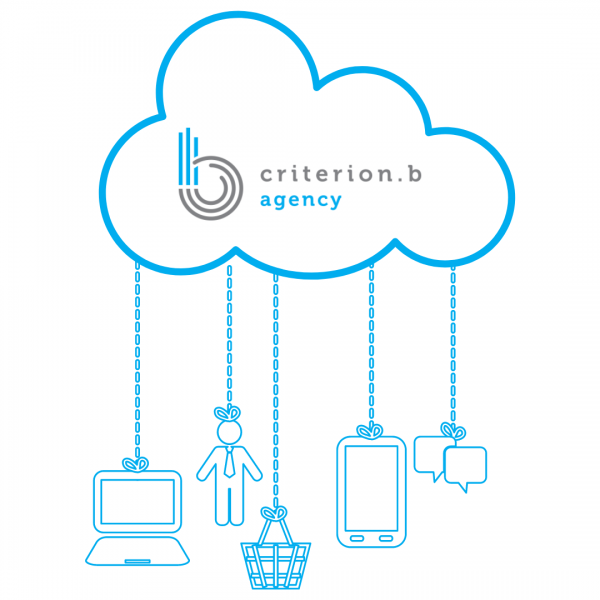Technology moves fast, as do digital marketing trends. As we live and breathe commercial real estate at our multifamily marketing agency, we understand where the industry is headed.
The following is our breakdown of the current trends in social media, augmented reality, and more — plus where we think the multifamily marketing space is headed in the future.

1. Content still reigns king.
Content marketing certainly is not a new concept and it certainly is not going out of style. By now, most companies know they need to create content that engages prospective customers. However, the question is how to do it more effectively. As the year continues, we will see commercial real estate companies creating more meaningful content than ever before.

As the commercial real estate industry turns to content marketing, the smart ones will be more targeted. The key here is that you don’t need a thousand views per blog. Rather, you only need your target audience to view your content. Once you segment your audience base properly, you can launch individualized advertising campaigns and target those segments specifically. This approach will help you gain more apartment leads and conversions from these retargeting ads.
Truthfully, there’s no way around this. The success of your digital multifamily marketing campaigns will depend on your use of originally created, high-quality custom content — as content continues to reign in the realm of digital apartment marketing.
2. You need to pay to play.
Now is the time to focus your efforts on paid social media apartment marketing. The organic reach across most social media platforms is dying. By investing in paid social media apartment marketing you will increase your engagement and get high organic reach, as well as better search marketing.
With paid social media multifamily marketing, almost all social media networks will give you clear metrics to measure your performance and ROI. Another benefit to utilizing paid social media marketing is the ability to reach completely new target customers and enhance your apartment lead generation. By paying to promote your post, you increase the chances that people might share your content or engage with your organization.
3. Social media for apartments is where it’s at.
Social media has come a long way since its early days of simply sending a message, selfies, or favorite links. It has matured enough to become an effective tool in digital multifamily marketing for engaging with targeted customers on an interactive channel. However, oftentimes those in commercial real estate forget to actually be social on social media.

Unfortunately, many property professionals do not take advantage of social media for apartments. Many times, they don’t reply to the influx of messages on social media. They also don’t maintain a frequent presence or put marketing dollars behind campaigns. Social media is an untapped market for properties to set themselves apart from the rest and can be the difference between turning a prospect into an apartment lead.

4. Instant messaging and chatbots are game changers.
Connectivity is another great advantage of social media. The simple ease of using functions such as direct messaging makes it easier than ever to engage with your residents. However, the conundrum that property managers now face is how to respond fast enough and accurately to prospective residents.
Cue multifamily marketing automation bots, also known as chatbots.
Today’s consumers want to engage with a company when and where it’s most convenient for them. For real estate, this could mean losing possible apartment leads if we are not able to respond to needs instantly. Chatbots seem to have cracked the code, quite literally, on instant communication. According to Botpress, a chatbot is defined as “any software that performs an automated task … the most intuitive definition is that a bot is a software that can have a conversation with a human.”

In addition to being programmed to have realistic, human-like conversations with prospective clients, chatbots are also able to gather specific information relevant to the seller or the marketer.
In the context of commercial real estate marketing, a chatbot can mean providing 24/7, instant responses that do not require an individual behind a screen scrambling to answer a question. Chatbots also provide a smoother user experience for the resident, and user experience is always critical.
5. You need to utilize live video to increase engagement.
Video’s popularity as a multifamily marketing medium continues to grow yearly, and this year is no different. Particularly, live video is where we see social media platforms migrating. Live video contains much more engagement and fares better with many social media algorithms. More and more companies in commercial real estate are recognizing the power of video as a digital multifamily marketing strategy.
There are huge opportunities for leasing agents to really innovate and get away from traditional apartment marketing by utilizing Facebook Live to conduct virtual tours or answer real-time questions. Likewise, property managers can get in on the fun, as they may use Snapchat or Instagram Stories as a way to engage with current residents and alert them to fun events.

6. It’s time to embrace virtual real estate.
Where do we see the future of multifamily marketing efforts? Virtual and augmented reality. As our industry rapidly embraces technological innovations, integrating VR and AR can set you apart from competitors.
Implementing VR elements into your apartment marketing scheme can prove effective when done correctly. Virtual reality opens the door to prospective clients that may have otherwise not been able to see your property, as they digitally tour units and enter a lifelike simulation of your multifamily property. Moving forward, we see this trend taking off as we can expect more and more companies to design 3D commercial real estate models through virtual reality.
Augmented reality is used by multifamily industry thought leaders today. It brings blueprints to life by taking a traditional flat layout and turning it into a lifelike 3D model. AR will provide a unique opportunity at every level of commercial real estate as it continues to evolve. Professionals believe that AR provides great value at the early stages of a construction project, and at the final stages of selling and multifamily marketing.

7. Drones can set your multifamily marketing apart.
Drones are a defining piece of technology for commercial real estate. Just a few years ago, it was conventional to hire a professional photographer for aerial shots of a property. Sellers now are capable of capturing stunning images and breathtaking videos of their property with camera-equipped drones, all while cutting back on costs.

Drones can depict a great layout of the entire property, especially when recording video. For larger areas, the unique benefit that drones provide is navigation beyond the property and into the surrounding area. They are able to capture incredible bodies of water, beautiful landscapes, and nearby neighborhoods. This particular feature can be optimized if paired creatively with live streaming.
Drones also allow high-rise offices to capture images of the entire building along with attractive neighboring hotspots. Drones are one trend guaranteed to set your marketing apart from competitors, and will surely spread within the commercial real estate industry.
What does all of this mean for multifamily marketing?
It’s a game-changing year for apartment marketing, especially in terms of how to reach prospective buyers in your area. Up until now, the marketing landscape has remained more or less the same, with social media for apartments claiming the throne in every corner of influence. However, we are now seeing increasingly fast-paced developments in the form of new and updated features such as live streaming and instant messaging.
What does all of this mean for multifamily marketing? Put simply, it means that content will have to be creative and engaging in order to gain more activity online. Are you ready to get creative?

5 Steps to Improve Your Multifamily Marketing Analytics Strategy
The world of digital marketing analytics is always changing, making it difficult to understand the correlation between ad dollars spent and revenue. As a multifamily agency, we know there is not a one-to-one correlation between the two, and it is nearly impossible to prove to upper management that our efforts are actually worth the investment.
The tracking and analyzing of your content mix to measure return on investment (ROI) is what digital marketing analytics is all about. And thankfully, there is no shortage of multifamily marketing resources to help collect and manage these data points.
Gearing Up With the Right Digital Marketing Analytics Tools
Google Analytics
Google Analytics is a free tool marketers use to track their multifamily website or app. While the interface seems daunting at first, this tool allows you to seamlessly monitor everything from the demographics and behavior of site visitors to bounce rate and what they are clicking on the most.
Social media insights
Most social media platforms offer their own analytics if you have a business account. Social media insights allow you to measure post reach, follower demographics, engagement and interactions, and even what time of the day your followers are most active. Additionally, you can track ad spend, cost per click, and more through Facebook’s Business Settings.
Hootsuite and Buffer
While Hootsuite and Buffer offer free platforms for social media management, the paid memberships allow you the ability to track all of your social media analytics on a single dashboard. Rather than logging into each of your social accounts to schedule posts individually, these platforms also give you the ability to schedule posts across multiple platforms from a single app.
Multifamily marketing automation software
While there are several tools to track digital marketing analytics, HubSpot, SharpSpring, and other marketing automation software allow you to wrap all of these into one. With these platforms, you can schedule-out email campaigns, social media posts, blogs, and more as well as track the digital marketing analytics for all of them.

Practicing Patience With Digital Marketing Analytics
Just as “a watched pot never boils,” you cannot expect to see immediate results from your multifamily marketing efforts. Patience is key as you track the success of your labor.
More likely than not, you will not see significant progress within the first week, month, or even quarter. Successful multifamily marketing takes time. While you should track items daily such as Facebook ad conversions or clicks on a CTA for your weekly e-newsletter, it is more important to monitor these metrics over a more extended time to see real improvement.
For example, your Facebook Business Page may receive 60 new followers in one week but only a handful the next. The change in followers is not necessarily a reason to be concerned, but it is a trend you should track closely to discover why your followers did not increase as much as in previous weeks.

After all, when you spend countless hours each month planning, scheduling, managing, and tracking your content marketing analytics, there’s no better way to enjoy the fruits of your labor (like increased ROI) than to track and improve your strategy continually. The key is to not get frustrated with your digital marketing analytics results. Stay patient and keep tracking.
How to Improve Your Digital Marketing Analytics Strategy
Reaching your buyer persona in the right place at the right time is paramount to multifamily marketing success, and digital marketing analytics are essential to the evaluation stage of any apartment marketing strategy. However, if not collected diligently, they are of no use.
If you are not achieving your multifamily marketing goals or seeing the results you want from your efforts, it’s time to adjust your strategy. The following are a few good practices to make habits that will increase your data’s relevance:
1. Identify your problem areas
First, decide where you could use some improvement. Focus your efforts on a few specific areas such as social media engagement or website traffic to track relevant data for your business.
2. Create SMART goals
To prove your analytics efforts are worth your time, you have to set SMART goals — Specific, Measurable, Achievable, Relevant, and Timely. This way, you can continue to track your progress in comparison to your end goals. Without this step, there is no way to assess the performance of the strategy you have put in place.
3. Stay committed
Now that you have the groundwork set, here comes the hard part — staying fully committed and on track with the goals you set. Tracking and reporting your analytics data weekly as well as monthly, quarterly, and yearly is crucial to finding different trends, so stay committed. Pausing your efforts or adding multiple layers to your pre-constructed plan will only lessen your impact.
4. Track your digital marketing analytics
Follow different trends in your digital marketing analytics data and make adjustments accordingly. Then, track and report the results to find new insights. Luckily, there are a variety of digital marketing analytics tools to help you with this crucial step.

5. Report and repeat
Successful multifamily marketing is a long, winding road of strategy, testing, retesting, and careful planning. When you have met your goals, report your data to your team and set new ones.

Trust the Experts to Become the Experts
Use digital marketing analytics to make informed decisions about the time, place, and manner in which you advertise. This way you can focus your ad spending in specific areas, to better reach your target audience and improve the value of your multifamily marketing.
Remember, if implementing and executing a successful multifamily marketing campaign is not your business’ specialty, you do not have to go at it alone. You can leave the heavy lifting to a multifamily marketing agency like Criterion.B. You spent time and energy creating multifamily branding that offers a unique value proposition, so now it is time to trust the experts to develop a multifamily marketing mix that sends the right message to the right people.
Not sure if your apartment marketing strategy needs the boost of working with a multifamily marketing agency? Check out our worksheet that helps you identify where your business’ apartment marketing strategy stands!

What’s the True Value of Multifamily Inbound Marketing?
Marketers should be wary of a few things when committing to a new multifamily marketing strategy. With overcrowded markets and constant construction in major metropolitan areas, it’s difficult to know how to distinguish your property.
When adopting nontraditional strategies, it’s hard for marketing veterans to understand how they add value.
Most marketers fail to realize that digital marketing offers more measurable value than traditional methods. Traditional methods bring prospects and residents at largely unknown rates, whereas multifamily inbound marketing offers measurable results.

In fact, multifamily inbound marketing offers three times more leads per dollar than traditional methods, and inbound leads cost 61% less on average.
This form of data intelligence is one of the many values that a digital marketing method like inbound offers marketers.
Maximizing Multifamily Marketing Analytics to Produce Measurable Insights
Perhaps the biggest benefit of digital marketing is the ability to track everything. Traditional marketing material printed and displayed cannot always track how many people saw your billboard or looked at your mailer. However, digital marketing tactics can provide this information with the ability to set goals that produce measurable insights.
Tools like Google Analytics and HubSpot or SharpSpring offer data on multifamily website visits or what pages they looked at. Email marketing platforms can tell you who opened your email and which links were clicked on most. And social media for apartments can give you the reach of organic posts and paid advertisements.
The world of analytics in the realm of multifamily inbound marketing is deep. It is just a matter of keeping up with that data.
Nurturing Your Apartment Leads to Land the Lease

Consider a marketer trying to lease up a workspace in a renovated building. Looking at digital efforts independently, they could know the percentage of traffic on the leasing page from social media versus referral sites versus organic searches. However, a multifamily inbound marketing approach further emphasizes integrating various methods to maximize a prospect’s educational experience.
For example, a well-planned social media post might lead to a blog with a call-to-action that leads to an offer describing the benefits of working downtown. By emailing the prospect after they download the offer, they’re given information on what to look for in an office space. Continued follow-ups via email might ultimately lead to a lease.

Using Data to Optimize Your Multifamily Inbound Marketing Results
Digital marketing can also pull data and analytics to understand the interactions at each point. A multifamily inbound marketer can figure out how many people who saw that social media post chose to click on the link. On average, they can tell how long people spent reading that blog and how many people on that blog clicked on the call-to-action feature. Insights like these allow marketers to make changes where necessary.
This is an underappreciated value of multifamily inbound marketing. Regularly tracking and offering such insights in the conversion funnel allows marketers to optimize their efforts better. Businesses can save time and money by ensuring their strategy is always on track, and that goals are within reach.
Per HubSpot, the less a business knows its key performance indicators (KPIs), the less likely it will be to meet revenue goals. Therefore, with this “track, test, and re-test” approach, properties using multifamily inbound marketing are certain to know and meet their vital goals.
Supporting the Numbers
While marketers in their daily life may care more about achieving goals efficiently, most executives care about the numbers. This is another area where multifamily inbound marketing offers strong value. Calculating ROI, cost per lead, and customer acquisition cost is simple when using inbound methods, as the data can be tracked easily.
Consider cost per lead: It’s as simple as knowing your ad spend and dividing it by total leads.
Cost per lead (CPL) = Total Marketing Spend / Total Leads
If you want to understand your cost down the pipeline, you dive deeper, calculating the cost per qualified apartment lead. To do so, you would need to divide your spending by the number of apartment leads classified at each point. Remember how we mentioned earlier that multifamily inbound leads cost 61% less on average? This is how marketers can prove that number.
For marketers looking for more comprehensive numbers, cost per customer acquisition can show each customer’s value. For this, you divide spending by amount of customers. The value of customer acquisition cost is its use in calculating overall ROI. This, along with lifetime value (Annual Spend on Product or Service by the Customer * Expected life of customer), can help you develop the ROI number your CFO desires.
ROI=( Lifetime Value – Cost Per Customer Acquisition)/ Lifetime Value
This number is key to gaining support for your efforts.
An All-Encompassing Multifamily Marketing Solution
It can be tempting for marketers and property managers to rely on the world of traditional advertising. For so long, our lives have been surrounded by intriguing commercials, radio ads, and billboards, making the digital world seem unfamiliar.
However, multifamily digital marketing efforts like inbound offer a true measurable ROI that is often absent from more traditional methods. With this, apartment marketers can ensure that their efforts are consistent and effective.
Reaching your buyer persona in the right place at the right time is paramount to marketing success, and marketing analytics are essential to the evaluation stage of any marketing strategy. However, if not collected diligently, they are of no use.

If you are not achieving your marketing goals or seeing the results you want from your efforts, it’s time to adjust your strategy. The following are a few good practices to make habits that will increase your data’s relevance:
1. Identify Your Problem Areas
First, decide where you could use some improvement. Focus your efforts on a few specific areas such as social media engagement or website traffic to track relevant data for your business.
2. Create SMART Goals
To prove your analytics efforts are worth your time, you have to set SMART goals — Specific, Measurable, Achievable, Relevant, and Timely. This way, you can continue to track your progress in comparison to your end goals. Without this step, there is no way to assess the performance of the strategy you have put in place.
3. Stay Committed
Now that you have the groundwork set, here comes the hard part — staying fully committed and on track with the goals you set. Tracking and reporting your analytics data weekly as well as monthly, quarterly, and yearly is crucial to finding different trends, so stay committed. Pausing your efforts or adding multiple layers to your pre-constructed plan will only lessen your impact.
4. Track Your Marketing Analytics Results
Follow different trends in your marketing analytics data and make adjustments accordingly. Then, track and report the results to find new insights. Luckily, there are a variety of marketing analytics tools to help you with this crucial step.
5. Report and Repeat
Successful marketing is a long, winding road of strategy, testing, retesting, and careful planning. When you have met your goals, report your data to your team and set new ones.
Trust the Experts to Become the Experts
Use marketing analytics to make informed decisions about the time, place, and manner in which you advertise. This way you can focus your ad spending in specific areas, to better reach your target audience and improve the value of your marketing.
Remember, if implementing and executing a successful marketing campaign is not your business’ specialty, you do not have to go at it alone. You can leave the heavy lifting to an inbound marketing agency. You spent time and energy creating a brand that has a unique value proposition, so now it is time to trust the experts to develop a marketing mix that sends the right message to the right people.
Not sure if your marketing strategy needs the boost of working with an agency? Check out our worksheet that helps you identify where your business’s marketing strategy stands!

Interchanging the terms marketing and advertising is commonplace today. However, understanding the difference between the two is important to effectively apply them to your competitive strategy.
Advertising is paid media used to promote a product or service.
Marketing is the strategic planning, implementing, and tracking of a mix of media and business components toward a specific campaign.

In other words, advertising is the promotional piece to the marketing mix that generates buzz around a product or service. Advertising gives the consumer information on the product and the next steps to take to make the purchase. For example, with the influx of CRE construction in DFW, an agency might design a plan that includes banners. The banners are used to draw the audience to that campaign and connect with the consumers.
Marketing as a Primary Strategy
Although advertising is an integral part of any campaign, it cannot exist without a clear marketing plan. Marketing begins by digging deep into your company’s roots to find its value proposition. This becomes the cornerstone of the marketing mix. After uncovering your unique selling point, you can pinpoint exactly how you want to target buyer personas. According to HubSpot, buyer personas “are fictional, generalized representations of your ideal customers.” These personas include the likes, dislikes, occupation, age, gender, and other demographic information that will tailor your advertising message so that your audience will best receive it.
In today’s consumer-centric world, every company’s goal should be to build two-way communication with the target audience. This means that paid advertisements that send out persuasive messages but lack engagement are less likely to create this connection. Keeping consumers interested, informed, and entertained with the right content can generate more leads and a higher conversion rate for your business.
According to AdWeek, a recent survey of 30 content marketing agencies and 600 digital publishers showed that content marketing on social media generated a higher return on investment (ROI) than native advertisements. Kelsey Lipert, vice president of marketing at Fractl, explained that this is likely because “readers are necessarily less engaged with advertising versus editorial content, and metrics show lower share rates, lower engagement rates, lower view counts, etc., in most cases.”
Debunking Advertising’s Bad Rep
On a daily basis, we all feel bombarded by advertisements. As marketers, we have struggled in the past to find the right way to make our audience aware of our offerings without being inundated. However, paid media proves its worth consistently in consumer behavior research in categories such as top-of-mind recall and brand recognition. The key is to sprinkle cohesive advertising messages across the marketing mix that draw consumer attention and create engagement. It’s also important to ensure that you are targeting your consumers in a way that pushes them to pay attention.
As digital advertising continues to grow and develop with technological advancements, advertisers target their paid media directly to whom they want to reach. Personalized messages generate relevance for each buyer persona, which means that advertising is becoming less of an annoyance and more of a helpful tool. With its inexpensive price tag and proven ROI, paid advertising continues to be profitable. Stay up-to-date on the ever-changing world of digital marketing with the newest digital marketing trends.
Marketing for Real Estate
The key to success with digital marketing is to have an integrated strategy. But running an inbound marketing campaign for your multifamily property can be difficult. Download our content calendar to form your content planning strategy.

Cracking the Code: How Marketers Can Prove ROI and Win Over CEOs in Multifamily
As marketers, we constantly face the challenge of justifying our efforts and proving that multifamily content marketing isn’t just a cost center — it’s a revenue driver. Whether working within a multifamily branding agency or an apartment marketing agency, we know that digital marketing plays a pivotal role in driving multifamily lead generation and contributing to a property’s bottom line.
Yet, despite our best efforts, 69% of CEOs believe marketing wastes time, money, and resources. This perception is why proving the ROI of multifamily marketing strategies is more crucial than ever. It’s not enough to talk about engagement rates, impressions, or social media growth—we have to connect our efforts directly to multifamily leads, lease conversions, and NOI improvements.
So, how do we shift the narrative and prove the value of multifamily branding, apartment branding, and digital marketing strategies to CEOs and stakeholders? Let’s break it down.
1. Be Relevant
While metrics like website traffic, social media engagement, and email open rates have their place, they don’t mean much if they aren’t tied to the property’s bottom line. To prove multifamily marketing ROI, marketers need to:
- Set SMART Goals – Establish Specific, Measurable, Achievable, Relevant, and Time-bound objectives that clearly define success. Instead of saying, “We want more engagement,” set a goal like: “Increase apartment tour bookings by 15% through our inbound multifamily campaign.”
- Track the Right Metrics – Multifamily inbound marketing should focus on data that connects to revenue: cost per lease, lead-to-lease conversion rate, and retention impact.
- Improve the Apartment Brand Experience – Ensure every marketing effort enhances the resident’s journey. This means investing in high-quality apartment brochures, engaging content, and compelling ad campaigns that convert apartment leads into leases.
- Integrate Sales and Marketing – If leasing teams aren’t using the leads marketing generates, multifamily marketing efforts go to waste. Regularly aligning with sales ensures apartment marketing trends translate into real results.
2. Play Offense
Too often, marketing is reactive, waiting for stakeholders to question ad spend, campaign performance, or leasing results. Instead, we need to proactively demonstrate the value of our strategies by:
- Justifying Budget with Data – Show how investing in digital marketing impacts apartment leads, retention rates, and resident lifetime value.
- Educating Leadership on Inbound Multifamily Marketing – CEOs may not fully grasp how content marketing, SEO, and digital advertising impact leasing efforts. Provide case studies, trend reports, and multifamily technology insights that showcase measurable results.
- Highlighting the Competitive Edge – In today’s competitive market, marketing ideas for apartment communities aren’t just about visibility—they’re about survival. Properties that fail to adapt to multifamily marketing trends risk losing out to competitors with stronger multifamily branding and better digital marketing strategies.
3. Always Go After the 3 Hs
To gain buy-in from stakeholders, your approach must be both logical and emotional:
- Head (Logic) – Present data-driven insights that defend your strategy. Use numbers, case studies, and industry benchmarks to show why content marketing works.
- Heart (Emotion) – Align marketing goals with CEO priorities. Whether it’s increasing NOI, boosting occupancy, or improving reputation, position your efforts as a strategic advantage rather than just another marketing expense.
- Hands (Action) – Once you have leadership buy-in, set clear action steps for implementation. Make it easy for leasing teams to adopt marketing initiatives and track lead performance.
4. Prepare to Show Your Medal
Marketing isn’t about quick wins — it’s about long-term brand building and sustained lead generation. CEOs and stakeholders might not always understand the nuances of multifamily branding and digital marketing, but they do care about one thing: results.
So, how do you prove that apartment marketing strategies are essential to business growth?
- Demonstrate ROI Over Time – Highlight long-term value over short-term costs. For example, an investment in content marketing for multifamily properties continues to generate leads months after a campaign ends.
- Tie Your Efforts to NOI – Show how SEO, content marketing, and Google Ads increase occupancy rates and reduce vacancies.
- Leverage Multifamily Technology – Use automation, CRM tracking, and AI-driven insights to refine multifamily inbound strategies and optimize lead generation.
Take risks and be the change that will keep your organization moving forward.
Proving That Content Marketing ROI Matters
At the end of the day, multifamily marketing isn’t just about branding — it’s about driving real, measurable business outcomes. To succeed in today’s industry, marketers must:
- Align marketing plans with real estate business goals.
- Leverage data and analytics to prove ROI.
- Integrate inbound and outbound marketing strategies.
- Stay ahead of multifamily marketing trends to maintain a competitive edge.
When done right, multifamily content marketing and inbound strategies can transform how a brand attracts, engages, and retains residents. And that’s a game-changer for any CEO watching the bottom line.
